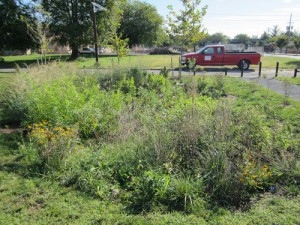New Jersey Future Blog
Water Infrastructure Funds: An Opportunity To Make Communities More Resilient
October 22nd, 2014 by New Jersey Future staff
The following was written by Ben Chou of the National Resources Defense Council, about New Jersey Environmental Infrastructure Trust‘s draft plan for use of its revolving funds. New Jersey Future and NRDC are submitting comments jointly to the New Jersey Department of Environmental Protection, stressing the improvements needed in order for these funds to be leveraged most effectively to make communities more resilient to extreme weather risks.
 With images of flooding, drought, storms, and other extreme weather appearing in the headlines more frequently, it’s clear that the effects of climate change already are being felt in neighborhoods, communities, and cities across the U.S. In recognition of the danger that these events pose, particularly to vital water and wastewater services, states like New Jersey are re-thinking how they can change the way they allocate public funds to help communities better prepare.
With images of flooding, drought, storms, and other extreme weather appearing in the headlines more frequently, it’s clear that the effects of climate change already are being felt in neighborhoods, communities, and cities across the U.S. In recognition of the danger that these events pose, particularly to vital water and wastewater services, states like New Jersey are re-thinking how they can change the way they allocate public funds to help communities better prepare.
One such funding program is the Clean Water State Revolving Fund (CWSRF), which is expected to provide $350 million to a variety of water quality protection projects throughout the state this year. In conjunction with New Jersey Future, we are submitting comments this week to the New Jersey Department of Environmental Protection (NJDEP) on how the state can improve the way it allocates these funds in order to make communities more resilient to a variety of extreme weather and climate risks.
Compared to other states, New Jersey has taken laudable steps to better support projects that will help communities become more resilient.
Read the entire post on the National Resources Defense Council’s blog, Switchboard.
- New Jersey Future/NRDC’s full comments.
- NRDC Issue Paper: State Revolving Infrastructure Funds
- NRDC Issue Brief: Urban Water Conservation

















To what extent has the condition of New Jersey’s aquifers been studied or considered when analyzing the condition of our water systems? Genrrally we look at streams and rivers and their watersheds, which are so important, but much of our water, especially for domestic use is drawn from underground. In approving continuing development, whether housing or industrial, does DEP or reviewing government entities, consider the effect on the aquifers to be used?